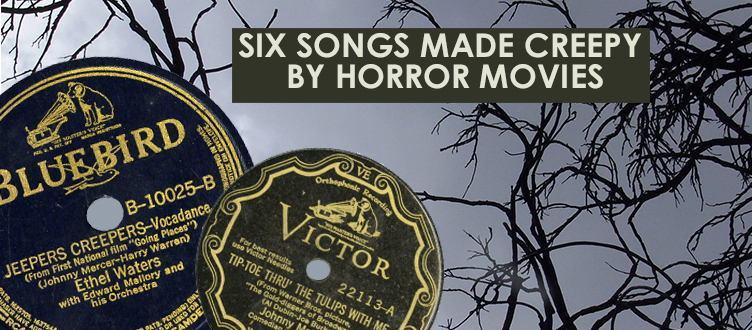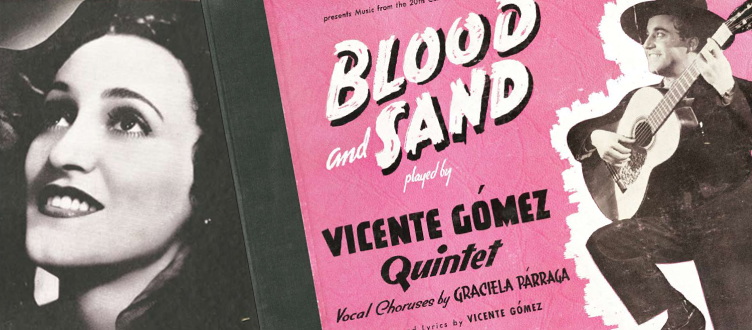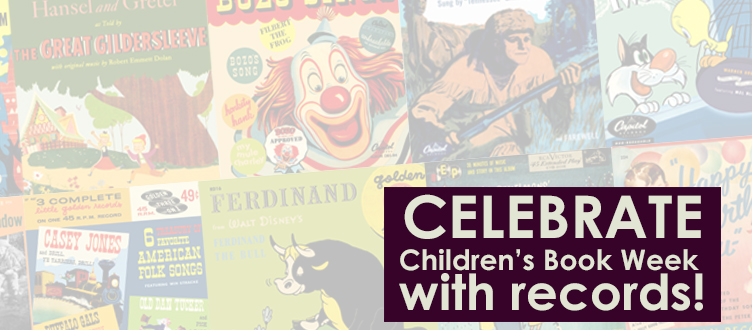 While some horror films feature blood-curdling scores (Jaws, Halloween, The Exorcist), there are certain songs that will forever be associated with the movies they helped make all the more terrifying. Just in time for Halloween, here are six vintage songs made infinitely creepier by horror movies, four of which you can find here at the Recorded Sound Archives.
While some horror films feature blood-curdling scores (Jaws, Halloween, The Exorcist), there are certain songs that will forever be associated with the movies they helped make all the more terrifying. Just in time for Halloween, here are six vintage songs made infinitely creepier by horror movies, four of which you can find here at the Recorded Sound Archives.
First up, is the Jeepers Creepers franchise which features the song Jeepers Creepers playing through the radio prior to the creature approaching and can be found playing on an old-timey radio as the movie progresses. Read More About This…
 We wanted to share one of several recordings within our Hispanic/Latin American collection of recordings. Last year we highlighted Xavier Cugat, as an important artist who shaped the world of Latin music into what it is today.
We wanted to share one of several recordings within our Hispanic/Latin American collection of recordings. Last year we highlighted Xavier Cugat, as an important artist who shaped the world of Latin music into what it is today.
This year we’d like to highlight the voice of Graciela Párraga and composer Vicente Gómez. Both of whom are featured on the album Blood and Sand within the Recorded Sound Archives Hispanic/Latin American collection. Read More About This…
 In celebration of college football season starting, we wanted to share a recording we have here at the Recorded Sound Archives by Walter Camp known as the Father of American Football.
In celebration of college football season starting, we wanted to share a recording we have here at the Recorded Sound Archives by Walter Camp known as the Father of American Football.
While working as an adviser to the United States military during World War I, Camp devised a program to help servicemen in both the Navy and Army become more physically fit. Camp wrote a book explaining the exercises and extolling their benefits. This book was later taken and recorded in 1921 and marketed to a wider audience with the Musical Health Builder record sets called the Daily Dozen Health Building Exercises. Read More About This…
 Did you know the Recorded Sound Archives at FAU Libraries has over 49,000 albums along with over 150,000 songs in its databases, which is growing everyday with the help of volunteers? With so many recordings to choose from, we have given Research Station users the ability to request items be digitized.
Did you know the Recorded Sound Archives at FAU Libraries has over 49,000 albums along with over 150,000 songs in its databases, which is growing everyday with the help of volunteers? With so many recordings to choose from, we have given Research Station users the ability to request items be digitized.
Below you’ll find a list of recordings that were recently added to the Research Station this Spring 2019 from requests made by Research Station Users. Read More About This…
 While some horror films feature blood-curdling scores (Jaws, Halloween, The Exorcist), there are certain songs that will forever be associated with the movies they helped make all the more terrifying. Just in time for Halloween, here are six vintage songs made infinitely creepier by horror movies, four of which you can find here at the Recorded Sound Archives.
While some horror films feature blood-curdling scores (Jaws, Halloween, The Exorcist), there are certain songs that will forever be associated with the movies they helped make all the more terrifying. Just in time for Halloween, here are six vintage songs made infinitely creepier by horror movies, four of which you can find here at the Recorded Sound Archives. We wanted to share one of several recordings within our Hispanic/Latin American collection of recordings. Last year we highlighted
We wanted to share one of several recordings within our Hispanic/Latin American collection of recordings. Last year we highlighted 

